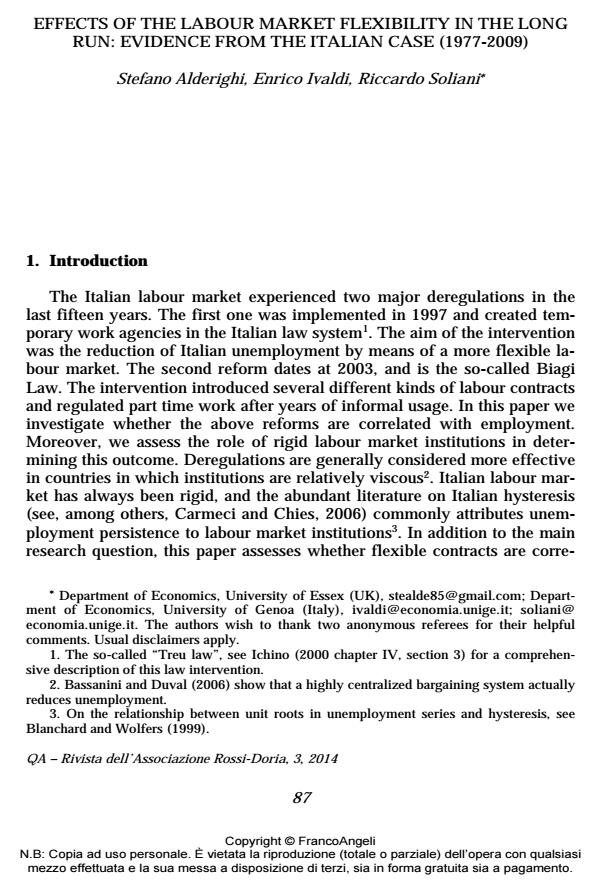Effects of the labour market flexibility in the long run: evidence from the italian case (1977-2009)
Journal title QA Rivista dell’Associazione Rossi-Doria
Author/s Stefano Alderighi, Enrico Ivaldi, Riccardo Soliani
Publishing Year 2014 Issue 2014/3
Language Italian Pages 24 P. 87-110 File size 163 KB
DOI 10.3280/QU2014-003004
DOI is like a bar code for intellectual property: to have more infomation
click here
Below, you can see the article first page
If you want to buy this article in PDF format, you can do it, following the instructions to buy download credits

FrancoAngeli is member of Publishers International Linking Association, Inc (PILA), a not-for-profit association which run the CrossRef service enabling links to and from online scholarly content.
Effects of Labour Market Flexibility in the Long Run: Evidence from the Italian Case (1977-2009) The present paper studies whether labour market deregulation is correlated with employment creation in Italy and the decline of trade union power. Our hypothesis is that the correlation does not hold, and that flexible contracts facilitated the dichotomy between industry and tertiary, without causing it. To test it, we first apply principal component analysis, then regression. The hypothesis is almost always confirmed. Flexible contracts are not correlated with youth employment creation, whilst trade union decline is correlated with macroeconomic indicators different from flexible contracts. These interventions facilitated a process already underway, caused by a structural change in the production paradigm. EconLit Classification: E240, J210
Keywords: Labour market, Labour flexibility, Trade unions, Unemployment, Italy, 1977-2009
Stefano Alderighi, Enrico Ivaldi, Riccardo Soliani, Effects of the labour market flexibility in the long run: evidence from the italian case (1977-2009) in "QA Rivista dell’Associazione Rossi-Doria" 3/2014, pp 87-110, DOI: 10.3280/QU2014-003004